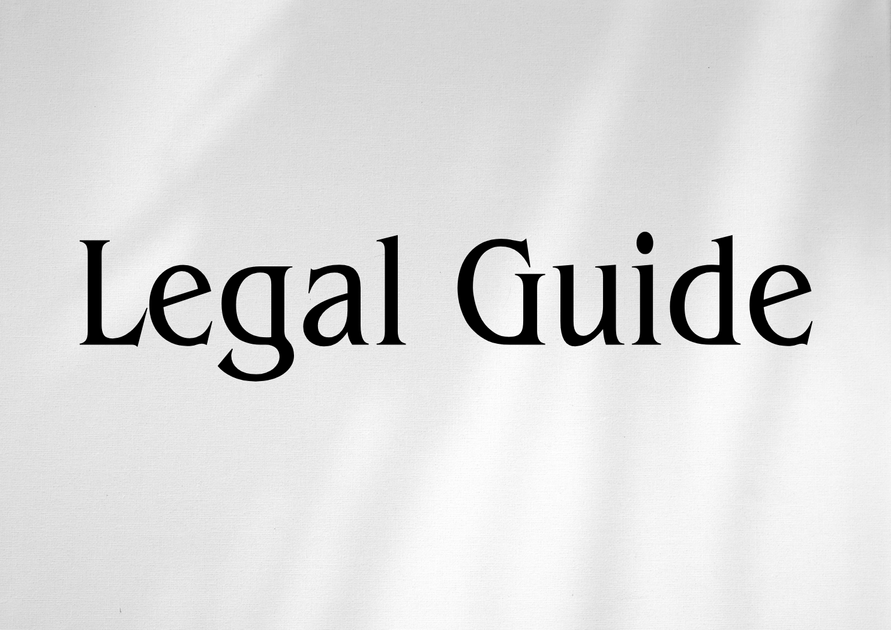Introduction: Air Carrier Liability for Air Cargo under Qatari Law – Navigating Compliance in the Gulf
The dynamic growth of the aviation and logistics sector across the Arabian Gulf has placed air cargo at the heart of regional commerce. With Qatar positioned as a key logistics hub in the Middle East, the legal framework surrounding air carrier liability for air cargo assumes critical significance. For businesses and legal practitioners in the UAE, understanding Qatari law’s approach to carrier liability is more than an academic exercise; it is an operational imperative as cross-border trade flourishes and regulatory oversight intensifies.
Recent years have witnessed notable legal developments, as Qatar aligns its aviation legislation with international standards, especially following its ratification of global conventions governing air transport. In particular, the interplay between the Qatari Civil Aviation Law (Law No. 15 of 2002, as amended), the Montreal Convention 1999, and key Cabinet Decisions shapes the obligations and liabilities of air carriers in cargo operations. For UAE companies with commercial ties to Qatar—such as freight forwarders, shippers, and multinational corporations relying on intra-GCC supply chains—proactive legal compliance and risk mitigation depend on a deep understanding of these laws.
This article provides a comprehensive, consultancy-grade analysis of air carrier liability for air cargo under Qatari law. It explains relevant statutory provisions, examines real-world application, and compares Qatari approaches to those in the UAE. We conclude with practical recommendations to support compliance and strategic decision-making for UAE businesses in 2025 and beyond.
Table of Contents
- Legal Foundations: Overview of Air Carrier Liability under Qatari Law
- Statutory Framework: Key Provisions and International Conventions
- Scope and Limitations of Air Carrier Liability
- Procedures for Claims and Dispute Resolution
- Risks, Enforcement, and Penalties for Non-Compliance
- Comparative Analysis: Qatari vs. UAE Law on Air Carrier Liability
- Case Studies and Practical Applications
- Best Practice Compliance Strategies for UAE Businesses
- Conclusion and Forward-Looking Perspectives
Legal Foundations: Overview of Air Carrier Liability under Qatari Law
Qatar’s legislative approach to air carrier liability for air cargo is rooted in Law No. 15 of 2002 (the Civil Aviation Law), as subsequently amended to reflect emerging commercial realities and Qatar’s commitments under international conventions. Central to this regime is the adoption of the Montreal Convention 1999, which was ratified by Qatar in 2005 and has since been incorporated into national law. The provisions within these legal instruments establish the framework for carrier responsibility, compensatory limits, procedural requirements, and avenues for dispute resolution.
This foundation is relevant for UAE businesses and legal advisors who must ensure that their contracts, cargo documentation, and risk management practices comply with both Qatari law and the conventions that underpin it.
Key Legislative Instruments
- Qatari Civil Aviation Law (Law No. 15 of 2002) – the principal domestic statute governing aviation operations, liability, and compensation in Qatar.
- Montreal Convention 1999 – the global standard for unifying rules relating to the liability of carriers, directly applicable in Qatar by virtue of ratification and implementation statutes.
- Ministerial Decisions and Executive Regulations – interpretive guidance and clarifications, issued periodically by the Qatari Civil Aviation Authority (QCAA).
Statutory Framework: Key Provisions and International Conventions
Understanding the full spectrum of air carrier liability under Qatari law requires a careful analysis of both local statutes and international treaties. Below we detail the critical features relevant for commercial cargo operations.
Carrier Liability under Qatari Civil Aviation Law
Law No. 15 of 2002 sets out the fundamental obligations of carriers regarding the carriage of goods by air. Notably, it:
- Defines the scope of “carriers” to include both national and foreign-registered airlines operating within or in transit through Qatari jurisdiction.
- Prescribes carrier liability for loss, damage, or delay of cargo, subject to exceptions for certain defenses (e.g., act of God, inherent defect of cargo).
- Incorporates limitations and exonerations parallel to those in the Montreal Convention, particularly regarding limits to liability per kilogram of cargo.
- Mandates cargo documentation, including air waybills, with specific formalities for validity and evidence in case of loss or damage.
Impact of the Montreal Convention 1999
The Montreal Convention, as adopted in Qatar, carries direct legal effect and supersedes conflicting domestic rules. Key features pertaining to cargo liability include:
- Strict Liability Regime: Carriers are strictly liable for destruction, loss, or damage of cargo during air carriage, up to prescribed financial limits—regardless of actual fault, unless exonerating circumstances are proven.
- Financial Limits: Liability is generally capped at 19 Special Drawing Rights (SDRs) per kilogram unless “willful misconduct” by the carrier is proven.
- Documentation and Notice Periods: Claims must be notified within 14 days of receipt (for visible damage) or 21 days (for non-visible damage) to preserve legal recourse.
- Jurisdictional Rules: The Convention prescribes forums for claims—typically the carrier’s domicile, principal place of business, place of destination, or agreed jurisdiction.
| Provision | Qatari Law No. 15/2002 | Montreal Convention 1999 |
|---|---|---|
| Carrier Liability | Presumed unless proven otherwise; exceptions apply | Strict liability up to 19 SDRs/kg, subject to exoneration |
| Documentation | Mandatory air waybill requirements | Air waybill recommended but not indispensable for liability |
| Claims Notice Period | Refer to Convention for international carriage | 14 days (visible damage), 21 days (concealed damage) |
| Limitation of Actions | 2 years from arrival/should-arrive date | 2 years from date of arrival or scheduled arrival |
| Jurisdiction | Qatari courts or mutually agreed forum | Carrier’s domicile, principal place, or contractually designated courts |
Scope and Limitations of Air Carrier Liability
For businesses operating cross-border cargo shipments, understanding the scope—and limitations—of carrier liability is vital for commercial certainty and risk allocation in contracts.
Events and Losses Covered
- Physical loss or damage to cargo occurring between acceptance for carriage and delivery at agreed destination
- Delays in delivery attributable to the carrier’s fault, subject to limitations
Exclusions & Defenses
- Inherent defect, quality, or vice of the cargo
- Improper packaging by consignor or third party
- Force majeure events (e.g., adverse weather beyond carrier’s control)
- Acts or omissions of the shipper or consignee
Only in cases of willful misconduct or gross negligence by the carrier can contractual limitations be broken, exposing carriers to full compensatory liability—a provision both in Qatari law and under the Convention.
Financial Limits and Declarations of Value
The standard liability cap is 19 SDRs per kilogram. However, parties may agree—via a declared value for carriage shown on the air waybill—for increased compensation in exchange for payment of supplementary charges. This nuanced approach allows both shippers and carriers to manage risk and insurance costs commensurately, a crucial consideration for high-value cargoes.
Procedures for Claims and Dispute Resolution
Efficient claims management is central to mitigating losses and maintaining supply chain integrity. Qatari law and the Montreal Convention conjunctively specify precise claims processes.
Claim Notification and Time Bars
- Visible Damage: Claim must be notified to carrier within 14 days of delivery.
- Non-Visible Damage: Notification within 21 days.
- Delays: Claim within 21 days of cargo placement at consignee’s disposal.
- Absolute Limitation Period: Any lawsuit must be filed within two years from date of arrival or scheduled arrival.
Failure to observe these deadlines entitles carriers to deny liability, except in exceptional circumstances where good cause for delay is proven. Internal carrier processes and documentary evidence (e.g., delivery receipts, air waybills, inspection records) are thus pivotal in defending or prosecuting claims.
Litigation and Dispute Resolution Forums
Jurisdiction for disputes generally follows the criteria established by the Montreal Convention, affording claimants access to Qatari courts, the carrier’s domicile, place of business, or, where applicable, arbitral forums stipulated in the carriage contract. UAE companies with disputes often benefit from regionally harmonized enforcement of awards under GCC treaties.
Risks, Enforcement, and Penalties for Non-Compliance
Non-compliance with air carrier liability obligations can trigger substantial legal, financial, and reputational risks for cargo operators and their clients.
Regulatory Enforcement in Qatar
- QCAA inspection of carrier documentation and operational records
- Administrative penalties for deficient or forged cargo documentation
- Possible civil claims by cargo owners and subrogated insurers
Penalties and Consequences
| Offence | Penalty (Qatar) | Related Penalty (UAE) |
|---|---|---|
| Late/incomplete documentation | QR 10,000 to QR 100,000 fine per breach | AED 20,000 to AED 200,000 per incident |
| Failure to observe liability procedures | Unlimited compensatory damages for willful default | Unlimited (case-by-case judicial assessment) |
| Non-payment of judgments/awards | Carrier blacklisting, license suspension or revocation | Trade license cancellation, criminal sanctions |
Insurance Requirements and Mitigation
Regulatory authorities in both Qatar and the UAE require air carriers to maintain adequate liability insurance cover proportional to their exposure under applicable law and treaties. Failure to evidence insurance can attract sanctions or preclude carriers from accessing local aviation markets. For shippers, validating carrier coverage and maintaining cargo-specific insurance is equally essential to mitigate financial risk.
Comparative Analysis: Qatari Law and UAE Law on Air Carrier Liability
While both Qatar and the UAE are parties to the Montreal Convention 1999, subtle but significant differences persist in the interpretation and implementation of air cargo liability law. The table below presents a structured comparison for practitioners managing trans-GCC logistics.
| Feature | Qatar | UAE (Federal Law No. 20/1991, as amended; 2025 updates) |
|---|---|---|
| Legal Base | Law No. 15/2002; Montreal Convention | Federal Law No. 20/1991; Montreal & Warsaw Conventions |
| Mental State Threshold for Unlimited Liability | “Wilful misconduct” or “recklessness” | “Deliberate default” or “gross negligence” |
| Consultation/Dispute Forums | Qatari courts, convention forums | UAE courts, convention forums, expedited GCC procedures |
| Mandatory Insurance Levels | QCAA prescribed levels; periodic reviews | GCAA regulations align with international convention limits |
| Documentary Formalities | Strict air waybill requirements | Increased digitalization accepted in 2025 regulatory updates |
Case Studies and Practical Applications
To illustrate the operational impact of Qatari air carrier liability provisions, below are common scenarios faced by UAE-based businesses engaged in cargo carriage to or via Qatar.
Case Study 1: Delayed Electronics Shipment
Scenario: A Dubai-based electronics distributor consigns high-value goods to Doha via a Qatari national carrier. Due to operational delays, the shipment misses the market launch timeline, incurring substantial commercial losses.
- Legal Analysis: Liability is capped under the Montreal Convention at 19 SDRs per kilogram, unless the claimant demonstrates willful misconduct by the carrier. Detailed records of delay, correspondence, and economic loss calculations are essential for successful claims. The carrier’s defense may hinge on exogenous factors (e.g., airspace congestion) or lack of declared value on the air waybill.
Case Study 2: Partial Cargo Damage on Arrival
Scenario: A UAE freight forwarder arranges perishable goods shipment to Qatar. On arrival, a significant portion of the cargo is discovered spoiled, with time-sensitive loss implications.
- Legal Analysis: The consignee must notify the carrier of the damage within 14 days to preserve its claim. Carrier may invoke defenses linked to the inherent nature of goods (e.g., perishability not mitigated by proper packaging). Success depends on evidence of due care and prompt claim notification.
Visual Suggestion: Compliance Checklist Table
| Action Item | Status (Yes/No) | Notes |
|---|---|---|
| Ensure valid air waybill documentation for each shipment | Mandatory under Qatari law and Montreal Convention | |
| Verify liability insurance coverage meets QCAA requirements | Update certificates annually | |
| Train staff in claims notification and documentation processes | Minimize risk from missed deadlines | |
| Review and update contracts to reflect declared value options | Critical for high-value shipments | |
| Conduct regular regulatory compliance audits | Incorporate new legal and policy updates (2025 and beyond) |
Best Practice Compliance Strategies for UAE Businesses
For UAE companies engaging with Qatari logistics partners, a proactive compliance approach is essential. The following strategies are recommended by leading legal consultancies:
- Review All Contracts: Ensure carriage agreements, air waybills, and service terms incorporate Montreal limits, risk allocation clauses, and Qatari legal references.
- Enhance Claims Recording Protocols: Maintain robust systems for documenting cargo condition at origin and destination, ensuring time-bound claim notification.
- Regular Legal Training: Educate operations and legal teams on relevant Qatari statutory requirements, especially as laws or treaties are updated.
- Engage in Regulatory Monitoring: Subscribe to updates from QCAA and UAE GCAA (General Civil Aviation Authority), given ongoing legal evolution anticipated through 2025 and after.
- Strengthen Insurance Protections: Insist on proof of carrier insurance and consider supplementary insurance for high-risk or high-value goods.
- Utilize Digital Tools: Adopt digital documentation solutions recognized by authorities in both Qatar and UAE (noting increased acceptance post-2025 UAE regulatory updates).
Conclusion and Forward-Looking Perspectives
The evolving landscape of air carrier liability for air cargo in Qatar, influenced by the Montreal Convention and bolstered by domestic regulatory vigilance, is reshaping how UAE businesses approach legal compliance, contract structuring, and risk management in cross-GCC logistics. As Qatar further harmonizes its laws with international standards—and as the UAE updates its own federal regulations—businesses must maintain a forward-looking legal strategy.
Key takeaways for UAE-based enterprises include the criticality of observing statutory claims procedures, proactively managing carrier contracts and insurance, and continuously monitoring legal developments both in Qatar and the UAE. A failure to align compliance programs with these evolving requirements can expose businesses to operational disruptions, financial penalties, and reputational harm.
Legal practitioners and corporate executives are advised to re-examine existing cargo arrangements, invest in compliance capacity-building, and seek professional legal advice as new decrees and regulatory guidance emerge. The next decade will see increased regulatory cooperation across the GCC, driving ever greater scrutiny on air cargo operations, with compliance—and strategic legal counsel—remaining the key to sustainable, risk-mitigated growth.




